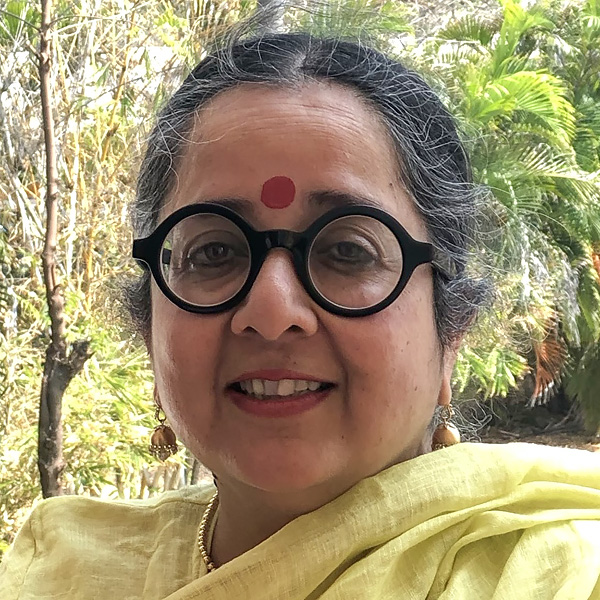Faculty Research Fellow
 Srilata Raman (Ph.D. University of Tübingen, 1998) is Associate Professor of Hinduism. She is a textualist who works on medieval South Asian/South Indian religion, particularly the Śrīvaiṣṇava tradition and the theological developments within it between the 12th-14th centuries, devotionalism (bhakti), historiography, hagiography, colonial sainthood, subaltern religion, famine studies and modern Tamil literature. Her areas of interest are Tamil and Sanskrit intellectual formations from the late medieval to the early colonial period. She is the author of Self –Surrender (Prapatti) to God in Śrīvaiṣṇavism: Tamil Cats and Sanskrit Monkeys. (Routledge, 2007) and The Transformation of Tamil Religion: Ramalinga Swamigal and Modern Dravidian Sainthood. (in press, Routledge, 2021), Her second book manuscript is on Ramalinga Swamigal, a 19th century poet-saint of the Tamil region whose writings can be located at the cusp of both premodern and early modern Tamil religion and, hence, is significant to the history of the transformation of Tamil religion in and through the colonial period.
Srilata Raman (Ph.D. University of Tübingen, 1998) is Associate Professor of Hinduism. She is a textualist who works on medieval South Asian/South Indian religion, particularly the Śrīvaiṣṇava tradition and the theological developments within it between the 12th-14th centuries, devotionalism (bhakti), historiography, hagiography, colonial sainthood, subaltern religion, famine studies and modern Tamil literature. Her areas of interest are Tamil and Sanskrit intellectual formations from the late medieval to the early colonial period. She is the author of Self –Surrender (Prapatti) to God in Śrīvaiṣṇavism: Tamil Cats and Sanskrit Monkeys. (Routledge, 2007) and The Transformation of Tamil Religion: Ramalinga Swamigal and Modern Dravidian Sainthood. (in press, Routledge, 2021), Her second book manuscript is on Ramalinga Swamigal, a 19th century poet-saint of the Tamil region whose writings can be located at the cusp of both premodern and early modern Tamil religion and, hence, is significant to the history of the transformation of Tamil religion in and through the colonial period.
Fellowship Project—Dalit Vedanta
It is the aim of this project, leading to a third book monograph, to retrieve a lost canon of Tamil religious literature which radically reshapes our understanding of South Indian religion in the 18th-20th centuries, by examining texts that shed light on caste mobility and non-elite assertion during and after the colonial period. Religious monastic institutions, called maṭams in the Tamil region, emerged widely after the middle of the second millennium CE and gradually became vast and wealthy institutions, which in turn produced nearly all of the religious literature between the 14th and 19th centuries CE. By contrast, there were also maṭams headed by subaltern figures – the Dalit gurus – which produced philosophical and religious texts that expounded a form of Tamil religion known as the Tamil Śaivasiddhānta that has had a long history stemming from the 7th century onwards in this region. These texts do not make their way into any canon of Tamil religious literature; nor do their authors find a place within the list of canonical authors of any known tradition. Yet they have been the main catalysts for bridging what is still assumed to be a clear-cut cleavage between the religion of elites and that of non-elites in the Tamil region between the 18th-early 20th centuries. This project will map the small religious establishments that produced these texts during this period in order to understand the institutional and textual basis of Dalit religious assertion in colonial South India.


